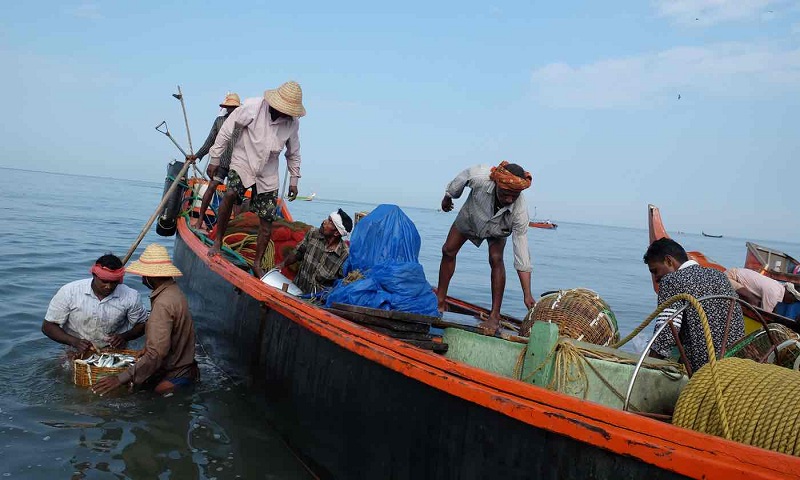Radio Monsoon aims to ensure safety reigns among fishermen in south India

With the rainy season approaching in Kerala state, a radio station is providing a low-tech forecast service to encourage 30,000 families to fish more safely. For the fisherfolk of India’s southern state of Kerala, risking life and limb is part of everyday life. As fish stocks deplete in coastal waters because of overfishing and climate change, fishermen have no option but to venture ever further out to sea on small boats, flimsy canoes and catamarans. These modest craft are prone to accidents, especially during the monsoon season from June to August. The absence of navigational aids, radio communication or safety devices heightens the risks. Radio Monsoon, a collaborative project that grew out of a competition at the University of Sussex, is designed to help, using a low-tech forecast service to ensure safer working conditions among the 30,000-plus fishing families in the area. During its pilot, Radio Monsoon provided daily forecasts in the local language of Malayalam, specifically tailored for 10 fishing villages along the 80km Thiruvananthapuram coast. These areas are particularly vulnerable to bad weather and natural disasters. Based on data from India’s national meteorological department and the centre for ocean information services, as well as local knowledge, Radio Monsoon’s forecasts are disseminated through social media, loudspeakers placed in harbours, and by word of mouth. Fishermen can also access forecasts over a phone line supported by an internet server. Their feedback is collected regularly and relayed to the forecasters so that the information can be adapted to their needs. Maxmillan Martin, who is from Kerala and is now a research associate at the University of Sussex, first had the idea for Radio Monsoon in collaboration with friends after the devastating tsunami of 2004. The group – a retired teacher, a journalist, a user interface designer and a social media expert, all from Kerala – came up with a narrowcast system whereby forecasts recorded on to CDs would be played in the harbour. “It was a very low-tech intervention but the fishermen loved it and the local forecasters did too,” says Martin. “It worked but we went on with our lives.” Martin, who has a background in geography, resurrected the idea while doing his PhD at the University of Sussex, entering it into a competition for innovation funding. A full-blown pilot followed in 2014, and ran on a “shoestring budget” until 2016, when funds ran out. Team now plans to relaunch and expand the project, monitoring its impact on fatalities and the search and rescue operations that currently save about 3,000 lives a year. Before Radio Monsoon, there was no widely used local and regular marine weather information service for local fishing communities. With families reliant on the money made from fishing hauls, a culture of risk-taking emerged. “Once, my boat capsized and I hit my head. I had to swim and reach the shore,” recalls Sebastian Kristudasan, 40, a fisherman in Kerala. “In such situations, if someone is nearby, they will save the fisherman; we save ourselves or we are gone.” Fishermen usually venture 70-80km from shore, says Kristudasan, adding that it can be difficult to navigate back if they go out too far. “Long ago, people could navigate looking at [the] stars. Now we don’t do that. GPS can help us coordinate. If there is no GPS, we go to a distance where we can see the shore and the mountains.

